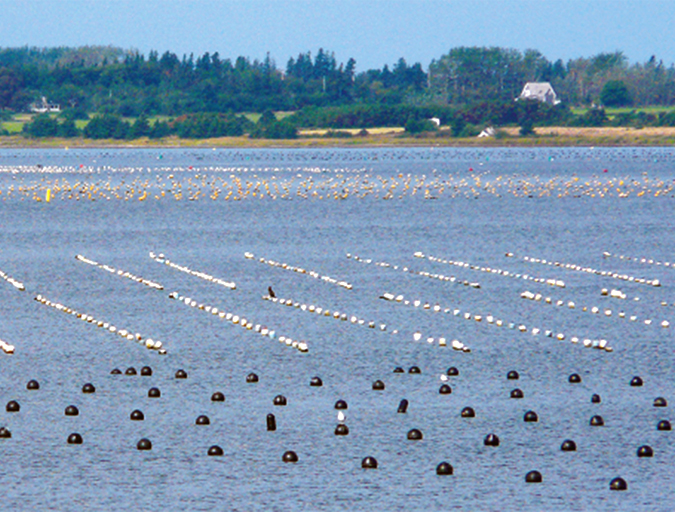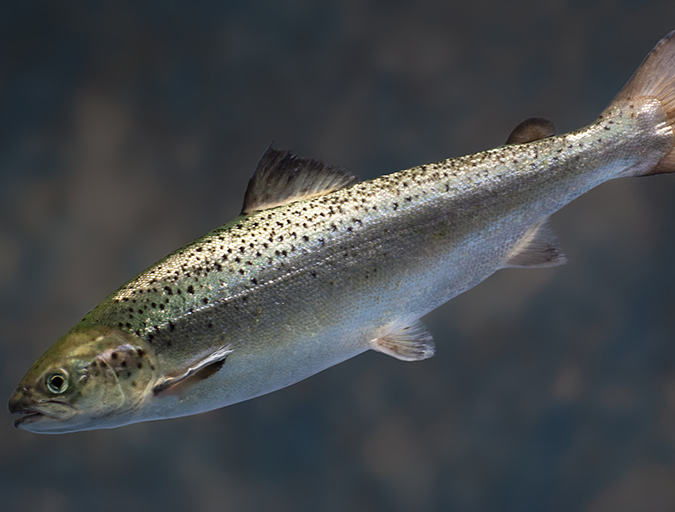Each member company will post sea lice enumeration statistics online

The British Columbia coastline is roughly the same length as that of Norway, the world’s leading producer of farmed salmon. The similarities with the Scandinavian nation don’t end there, however, as farmed salmon producers in both regions are entrenched in a battle with the common sea louse (Lepeophtheirus salmonis).
Harmless to humans but potentially deadly to fish, sea lice have remained a tenacious pest to the industry, leading to losses at the farm level and fueling negative perceptions in the public sphere. The British Columbia Salmon Farmers Association (BCSFA), aiming for greater transparency regarding its challenges and practices in order to foster trust with consumers, recently announced that each of its member companies will be posting sea lice enumeration statistics online.
The first step in the industry’s transparency efforts came in late October, when BCSFA unveiled its first sustainability progress report at the Global Aquaculture Alliance’s GOAL conference, held in its own backyard in Vancouver, B.C.
At the event, Stewart Hawthorn, managing director of Grieg Seafood BC Ltd., said the industry was committed to “transparency on sea lice on farms, and making that information more publicly available.” Hawthorn, BCSFA chairman, added that each company producing salmon in provincial waters — including leaders Marine Harvest, Cermaq and Grieg — will divulge its data on a monthly basis.
When a vaccine is developed — not if — our industry will be generally antibiotic-free.
“Thinking about aquaculture globally is something that we in B.C. need to do more of,” BCSFA Executive Director Jeremy Dunn said at GOAL. “Our goal is to be better than we are now. But we are much better than we were 10 years ago. We want to show our progress and the trends over time and the good work that we’re doing.” Dunn added that links to all producers’ sea lice reports can be found on the “fish health” section of the BCSFA website.
At GOAL, it was revealed that farmers have an additional challenge transcending sea lice: yellow mouth, or mouth rot (tenacibaculosis). The disease, caused by the Tenacibaculum maritimum bacterium that is spread in numerous ways, is marked by lesions and erosions in the mouth that are covered by a yellow film. Outbreaks typically occur shortly after juvenile fish are transferred from tanks to net pens, but can also impact larger fish. Affected fish often lose their appetites, which can lead to significant and unpredictable losses. To date, there is no vaccine.

The British Columbia Centre for Aquatic Health Sciences (CAHS) held a workshop this past February to help the industry get a firmer grip on the disease. Annual financial impacts to Grieg Seafood BC are roughly $1.65 million, according to a report presented at the workshop and posted on the CAHS website. The severity of the disease is influenced by fish size, quality, smoltification, temperature and salinity.
Yellow mouth, also believed to cause winter ulcers, is the chief reason the industry still uses antibiotics, said Hawthorn.
“Where we want to go from here, is to reduce antibiotic use on our farms, and drive innovations in health management. The goal is not to use antibiotics at all,” Hawthorn.
Despite the challenges with pests and disease, the industry maintains that its fish are healthy.
“We can’t mention it enough: Salmon raised on our farms are incredibly healthy animals; we have a 94 percent survival rate. We use antibiotics only when the fish are showing signs of sickness,” said Dunn, adding that the industry has made cut antibiotic use seven-fold over last 10 years. Current use is down to 50 grams per metric ton of salmon, with 1.5-1.6 treatments per cycle.
“When a vaccine is developed — not if — our industry will be generally antibiotic-free,” Dunn concluded.
Now that you've reached the end of the article ...
… please consider supporting GSA’s mission to advance responsible seafood practices through education, advocacy and third-party assurances. The Advocate aims to document the evolution of responsible seafood practices and share the expansive knowledge of our vast network of contributors.
By becoming a Global Seafood Alliance member, you’re ensuring that all of the pre-competitive work we do through member benefits, resources and events can continue. Individual membership costs just $50 a year.
Not a GSA member? Join us.
Author
-

James Wright
Editorial Manager
Global Aquaculture Alliance
Portsmouth, NH, USA
Tagged With
Related Posts

Innovation & Investment
Aquaculture in Canada: status, perspectives
Canada exports farmed seafood products to more than 22 countries and is the main seafood supplier to the U.S. market. Finfish, primarily salmon, production is strong and shellfish production is growing, but diversification will be imperative to maintain competitiveness.

Intelligence
GM salmon and the FDA: 10 takeaways
After a 20-year process, a genetically modified fish earned U.S. Food and Drug Administration approval, reigniting one of the seafood industry’s most intriguing controversies. Here are 10 key downloads from the groundbreaking decision over AquAdvantage salmon.


